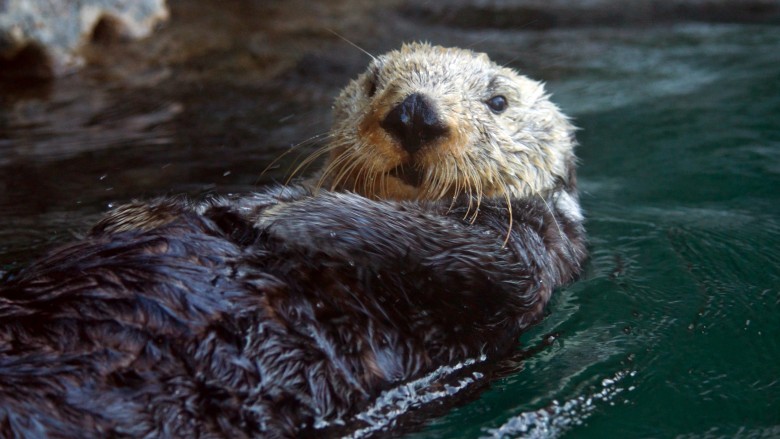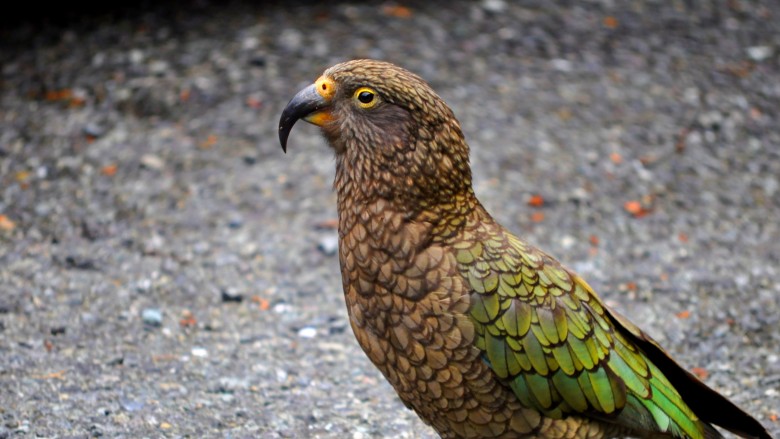Animals That Have Already Developed Human-Like Intelligence
In millions of years, when humans have destroyed themselves or moved on to another planet, it will be up to animals to take over the Earth. But never mind the distant future: some animals alive now have already developed intelligence that rivals our own. They'll probably be the next sentient race.
Cetaceans have language
Whales and dolphins are known as cetaceans, which means "big fish" in Latin, even though they aren't fish. Bravely triumphing over this horrible misnomer, cetaceans have evolved into amazing creatures that are super smart. But their intelligence isn't just doing cool tricks. They have made their own pictorial language.
Cetaceans produce sound to find out how far away things are, like sonar. It's a skill not just used for navigation but also as a language completely unlike our own. Cetaceans can learn the shape of a creature or object and then project that sound profile to other members of their species. For example, a dolphin can learn what image a fish makes when they bounce sound off of it. Then, if the dolphin wants to tell another dolphin that it saw a super rad-looking fish that it just has to tell a friend about, it can project that sound profile to its dolphin buddy.
It works really well, and cetaceans have developed complex social structures using communication. Researchers are still trying to figure out how complex cetacean language is, but we probably aren't too far off from them figuring out how to talk to us and tell us, "So long, and thanks for all the fish."
Elephants mourn their dead
Nature doesn't care about emotions. We watch lions just tearing up gazelles willy-nilly and animals just leaving their dead to rot. But a few animals have developed at least a little bit of feeling (or a lot of feelings, as we are reminded whenever we are around moody teenagers). Shockingly, elephants have led the charge on this, mourning for their dead and even holding funeral practices.
Researchers have long suspected that elephants do this but find it nearly impossible to get any video footage of it. Elephant funerals are really exclusive affairs evidently, and they aren't fans of humans showing up to film. Frankly, after all the poaching, we wouldn't trust humans either if we were elephants. However, really sneaky researchers have watched elephants bury their dead under foliage. Researchers have even discovered elephant cemeteries. Some elephant families go through the effort of burying all their dead in the same place.
We also know that when a member of their family dies, elephants become more stressed and depressed. How they developed a respect for the dead is still a mystery, but it's a fascinating example of how animals can feel in ways similar to humans. Knowing that, it makes the ivory trade even sadder.
Pigs are shockingly smart and like to play video games
Most people just think of pigs are bacon sources, but new research shows we really need to rethink our relationships with these portly animals. Pigs are some of the smartest creatures on Earth, with intelligence on par with chimpanzees, dogs, and even 3-year-old children.
For decades, research into pig psychology was ignored, probably because it has big implications for how we think about the food we eat, and because nobody wanted to put "pig researcher" on their resume. In recent years, scientists have realized they were missing out on something cool and started hanging out with pigs. The results were surprising. Pigs form relationships just like we do, with a society focused around the relationships between parents and offspring. Pigs recognize other pigs as individuals, can understand symbolic language, have amazing long-term memories, and form close bonds with familiar humans.
Probably the most human-like trait they have developed is that, like countless teenagers, pigs love wasting their time playing video games. Researchers have developed games for pigs that let them move color lights to targets on touch screens. They will even play the game against a human player and do better than dogs do at comparable games. It's only a matter of time before they learn Call of Duty, so maybe it's time to rethink pigs. In the future, we might think about eating pigs with the same revulsion we think of eating monkeys and dogs ... or our 3-year-olds.
Octopi are surprisingly mischievous
If we had to make a list of animals that were the most different from humans, octopi would find themselves pretty close to the top. They're super weird-looking and have evolved in totally different ways from humans, but they're one of the few creatures that has near-human intelligence. Researchers have observed octopi doing really intelligent things like showing self-awareness, complex defensive strategies for their homes, and being really stingy with their friend groups. Those are impressive, but what freaks us out is that they use their big brains to troll their human counterparts.
In Germany, an octopus named Otto got sick of the lights above its aquarium. Wanting to do some redecorating, Otto shot water at the lights, knocking them out one by one. The aquarium staff had trained him to shoot waters at guests, and Otto turned that skill back around to destroy lights and cause mayhem for the staff. Across the ocean in California, another octopus figured out how to dismantle the plumbing in his tank and flooded a whole aquarium, just because he could. With this sort of mayhem, Cthulhu is probably very proud.
Sea otters keep a favorite rock
Sea otters are super smart to start with. They're one of the few animals that use tools to get food, cracking open mollusks with rocks. Once an otter finds a rock that is really good at this, it keeps that rock with it at all times. The otter has baggy folds of skin under its forearms, and these act as little pouches for it to keep a hold of its pet rocks throughout its life.
That's one of the cutest animal behaviors we have ever heard of, and it makes these little sea weasels incredibly endearing. Unfortunately, they're an endangered species since their population was hit really hard by the fur trade. Hopefully these little guys stay around for a while, with their favorite rocks to keep them company.
Kea parrots mess with traps, just to troll us
Rangers in the Fiordland region of New Zealand started noticing that traps they had set out for wild weasels were getting triggered, but there was no weasel inside. Puzzled, they put motion-activated cameras around the traps to figure out who was triggering them. They probably assumed it was some sort of hooligan, or at least some kind of mammal. Turned out, it was the local parrots.
Somehow, the kea had developed a liking for the traps. Camera footage showed they'd collect sticks around the trap, testing each to figure out which would set off the trap. When the sticks didn't work as well as they wanted, the kea would whittle down the end until it worked.
The rangers laughed at the smart parrots and modified the traps to make them kea-proof. But after a few months, the traps went off again. The kea were too smart. Now, there's a constant race between the rangers and the kea. Every time they modify the traps, the kea figure them out. The best part? There's no real reward for the kea besides the loud noise that the trap makes when it goes off. They just like making noise for no good reason. If that's not human-like intelligence, we don't know what is.
Archerfish hunt with water
Archerfish live in tropical climates, usually shallow water sources. They eat bugs, which is a problem. Bugs fly in the air, and archerfish live in the water, so how can they eat? Instead of just waiting for dead bugs to fall, archerfish are proactive. They gather up water in their mouths and shoot it into the air, knocking bugs into the water for them to eat. It's not easy at all, and archerfish are damn good at it.
One of the biggest problems is that water and air have a different index of refraction, which is why when we look into water, objects we see under the surface are in slightly different locations than we see them. Archerfish have to deal with the same thing looking into the air from the water. They have learned how to compensate for the effect and can shoot an amazingly accurate burst of water at nearly any angle.
These bursts of water aren't just piddly streams. Archerfish have learned how to shoot like police water cannons. The little fish can make the end of the stream travel faster than the front of the stream for maximum force of impact. The fish shoots so fast, a researcher who accidentally got shot by one said it felt like an insect had bit him. We can only hope archerfish don't make a habit out of hitting humans with their biological SuperSoaker.
Eurasian magpies are self-aware
Self-awareness is a trait only a few animals have. Most animals, when shown a reflection of themselves in a mirror, don't realize the reflection is themselves but think it's an animal of the same species. Hilariously, sometimes, animals like parrots will befriend their own reflections. Only the smartest animals can identify a reflection of themselves as themselves. Only one bird can. As smart as crows and parrots are, that achievement belongs to the Eurasian magpie.
To test magpie self-awareness, researchers stuck little stickers on the magpie and put them it in front of a mirror. As soon as they did, the magpie got super agitated and started trying to pull off the sticker, probably because it was a color that didn't match its eyes or something. Oddly, the magpie didn't mind the feeling of having the sticker on its neck, it just freaked out when it saw the sticker in the reflection.
What is really weird about the results is that for years, biologists have thought that self-awareness resides in the part of the brain called the neocortex. But birds don't have one. Magpies aren't really animals that people pay too much attention to, but it turns out they're a big mystery for animal researchers.



